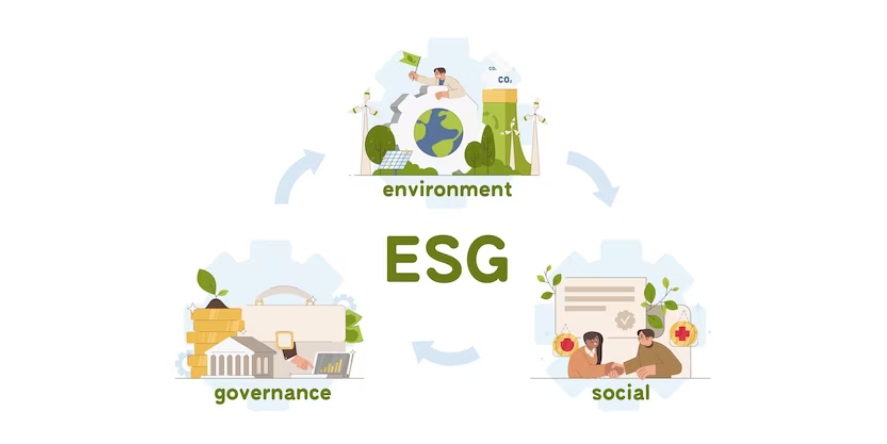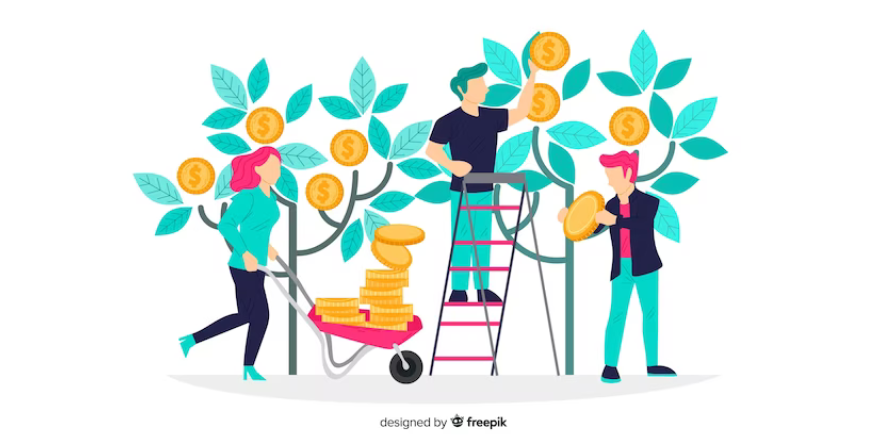Financial institutions are working to promote ESG principles, green finance, and sustainable practices, opening the door to a better future. It is crucial to understand precisely what practices banks are employing to revolutionize and promote sustainability. This blog will draw a limelight on understanding sustainable banking, how banks are driving the change, promoting financial inclusion along with innovations brought by various fintech companies for sustainability.
Introduction
Understanding Sustainable Banking
The European commission defines Sustainable banking as the process of taking due account of environmental, social, and governance (ESG) considerations when making investment decisions in the financial sector, leading to increased longer-term investments into sustainable practices and projects. Keeping in mind the environmental impact, social considerations and lastly governance of public/private institutions. The strategy aims to support the financing of the transition to a sustainable economy by proposing action in four areas: transition finance, inclusiveness, resilience and contribution of the financial system to global ambition.

Transforming Finance Through Sustainable Practices
The crucial contribution of the financial sector to encouraging responsible growth was recognised in the Paris Agreement. From then on various methods are in use for bringing in transformation and implementing sustainability.
Some Banks that are making a difference:
Ando: Ando is helping to make solar power possible for American charter schools and low-to-moderate income communities. They have launched multiple initiatives some of them include- Solar for all and Divest 101.
Amalgamated bank: Solar Holler, one of the beneficiaries of the bank talks about the change it has brought in the Appalachian region in the U.S. The goal of the bank aligns with Solar Holler thus choosing a greener, cleaner, healthier future.
Tomorrow: It has incorporated a simple method called ‘Interchange Fee’ which is used in the preservation of forests in northern Brazil. Any person who owns a card of Tomorrow is charged with a small amount i.e. an interchange fee which is then allocated to environmental programmes.
First Abu Dhabi Bank: By 2030, First Abu Dhabi Bank pledged to lend, invest, and support 75 billion USD in projects aimed at finding environmentally and socially responsible solutions thus supporting sustainable practices.
Al-Rajhi Banking and Investment Corp: Five of the six renewable energy projects managed by REPO that were awarded funding in 2020 were supported by the bank, which also provided USD 700 million in financing for similar projects in 2021.
What draws investors to sustainable financing and how does it spur private investment
Equity and debt are the two primary financial tools used in sustainable financing. Debt financing typically falls into two categories: loans and bonds. A loan is when a bank transfers money to a company or individual, while a bond involves payment from the market or public to a company that issues the bond. In the realm of green investment projects, leveraging is commonly employed to reduce perceived risk and attract private investors. This can include the use of loan and credit guarantees, as well as investments in junior equity. Public finance institutions often utilize loan or credit guarantees to manage risk effectively. By assuming the investment risk on behalf of the investor, the institution providing the guarantee allows lenders to offer lower interest rates on loans. This reduction in risk leads to lower capital costs for the investor and ultimately enhances profitability.
Preferred stockholders hold a slightly lower level of risk as they are entitled to be paid out before common stockholders in the event of liquidation.

Promoting Financial Inclusion Through Green Financing
Promotion of financial inclusion is an essential strategy to address two important global challenges: enhancing underprivileged groups’ access to financial services and assisting sustainable development to address environmental problems.
Internal Promotion: Adapting existing risk governance frameworks to include environmental and social considerations presents a substantial challenge for regulatory design. It will be necessary for the financial sector to recognise and evaluate the financial risks associated with sustainability, particularly those related to the environment and climate change.
| Cause | Bank that drove change | Developments |
| Super Typhoon Yolanda, 2013 | Bangko Sentral ng Pilipinas (BSP) | Formalized regulatory relief measures that could be offered by banks.Climate change mitigation and resilience, alongside traditional poverty alleviation efforts became priority areas for financial sector development. |
Fostering Cooperation: Financial regulators need to cooperate with the government strategies and further enhance them. Some of the joint initiatives are listed below:
| Country | Stakeholders | Initiative |
| Thailand | Ministry of Finance, the central bank, the insurance regulator,the stock exchange and the Securities and ExchangeCommission | Creating a roadmap for sustainable finance in the nation which include Green financial sector incentive program, green labeling/definitions, the development of disclosure standards and harmonizing policy |
| Bhutan | Royal Monetary Authority | Green Finance Roadmap: Promotion of green financing for Bhutan’s aim for sustainable development, and to coordinate policies in the international public/private sectors. |
| Egypt | Central Bank of Egypt | The bank is aiming for climate change mitigation along with financial inclusion for women |
Microfinance and Microloans: Increase in the number of microfinance and microloan programmes available to help people and small enterprises who are involved in environmentally friendly activities. These tiny loans can promote entrepreneurship, jumpstart green initiatives, lessen financial exclusion and promote sustainable practices.
Education and Public Awareness: Spreading knowledge about the significance of green financing and its ability to support sustainable development among financial institutions as well as the general public. Demand for involvement in green financial services can be increased by educating individuals about the advantages of making investments in green projects.

Innovation in Sustainable Fintech Solutions
Fintech companies are developing platforms that use big data and AI to assess the ESG performance of investments, enabling banks to make more informed and sustainable decisions.
Some of the fintech companies that are driving innovation-
Stripe: It allows business clients to automatically deduct a portion of their income (in accordance with a predetermined proportion of deductions) to fund cutting-edge carbon emission-reduction solutions. Companies who offer deductions are given a special green label to promote a good company reputation.
TreeCard: This startup makes use of wooden payment cards that work similarly to the debit card. The commission for using them is used to fund the planting of trees in 15 different developing nations. The materials used are organic and recyclable. These cards allow users to keep track of their spending and see how many trees they have funded.
Aspiration: They introduced ‘Plant Your Change’ initiative. It entails rounding up all transactions to the nearest dollar amount and transferring the appropriate difference to pay for tree planting. The business started selling Aspiration Zero payment cards in 2021, allowing their owners to offset their carbon footprint through deductions from each transaction and earn cashback once they reach the monthly deduction goal.
Atmos: To hasten the transition to a clean, equitable, and transformed green economy, Atmos gathers money in deposit accounts and uses it to make investments only in climate-positive infrastructure. Renewable energy sources, energy efficiency initiatives, electric transportation, green building and sustainable agriculture are Atmos’s top investment priorities.

Conclusion
Sustainable Banking: The way forward
It is high time to deal with the threats affecting our planet. Not only are the countries responsible to think proactively but also the respective stakeholders need to steer the wheel for growth. Demand for green financing and sustainable banking services is probably going to rise significantly as more institutions and investors realize how important sustainability and ESG issues are. Initiatives like carbon pricing, renewable energy goals, and rules governing green finance are being implemented.The development of new business models and technology will be a significant additional driver. Sustainable investments are becoming more alluring and economical because of the advancement of new renewable energy sources like wind and solar energy.
Blog by Tamanna Shaikh















